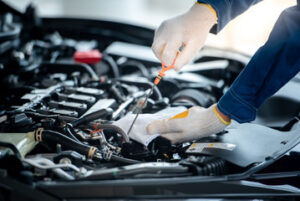Building a deck is both an art and a science. It requires precision, creativity, and a deep understanding of materials and structural integrity. Deck builders possess a unique blend of technical skill and aesthetic sense to create outdoor spaces that are both functional and visually appealing. Every project begins with a vision, transforming an idea into a tangible structure that enhances any property. Contact Deck Builders Greensboro NC for professional help.

The process of deck building starts with a detailed plan. A skilled deck builder carefully assesses the available space, considering factors like sunlight exposure, drainage, and soil stability. They work to ensure that the foundation is strong enough to support the structure’s weight and resist environmental pressures. Planning also involves choosing the right materials, balancing durability with visual appeal. The selection process takes into account weather resistance, maintenance requirements, and the overall design theme.
Attention to detail sets apart a professional deck builder from an amateur. Accurate measurements and precise cuts are crucial for structural stability and a seamless finish. Even small miscalculations can lead to uneven surfaces or weakened support. Deck builders also account for the natural expansion and contraction of materials due to temperature changes. This ensures that the deck remains stable and secure over time.
Creativity plays a significant role in deck building. Modern designs incorporate multi-level platforms, built-in seating, and integrated lighting for a polished look. Skilled builders understand how to blend different textures and tones to create a harmonious outdoor setting. They also experiment with patterns, combining straight and diagonal lines to add visual interest. The goal is to create a space that reflects the client’s personality while maintaining structural integrity.
Material choice influences both the appearance and longevity of a deck. Wood remains a popular option for its natural warmth and texture, but composite and synthetic materials offer increased durability and lower maintenance. Deck builders weigh the pros and cons of each material, considering cost, environmental impact, and expected lifespan. Proper sealing and treatment further extend the life of the deck, protecting it from moisture, insects, and UV damage.
Safety is a top priority in deck construction. Builders ensure that railings, stairs, and load-bearing components meet industry standards. They calculate the weight capacity of the deck, factoring in furniture, occupants, and additional features like hot tubs or planters. Fasteners and connectors are selected for their resistance to rust and corrosion, preventing structural failure over time. Attention to these details ensures that the deck remains safe for years to come.
Innovative trends are shaping modern deck designs. Floating decks, which sit directly on the ground, provide a low-profile look that integrates seamlessly with the landscape. Roof-top decks are gaining popularity, offering elevated views and private outdoor retreats. Multi-functional designs with built-in storage and convertible seating maximize the use of available space. Some builders incorporate eco-friendly elements like solar lighting and rainwater collection systems.
Customization is key to creating a deck that reflects the client’s lifestyle. Builders work closely with clients to understand how they intend to use the space. Some prefer a cozy retreat with lounge chairs and a fire pit, while others want an open area for entertaining large groups. Deck builders recommend features like pergolas for shade, privacy screens for seclusion, and accent lighting for ambiance. The goal is to create a versatile outdoor space that meets the client’s needs.
Maintenance plays a significant role in the longevity of a deck. Builders educate clients on proper cleaning techniques and maintenance schedules. Regular sweeping and washing prevent dirt buildup and mold growth. Sealing wood decks every few years protects against moisture penetration and sun damage. Composite decks require less maintenance but benefit from periodic washing to remove debris and maintain their appearance. Proper care extends the life of the deck and preserves its aesthetic appeal.
Deck builders must also navigate regulatory requirements and permits. Local building codes dictate the minimum standards for deck height, railing design, and structural components. Builders secure the necessary permits and schedule inspections to ensure compliance with safety standards. Failure to meet these requirements can result in fines or forced removal of the deck. Experienced builders anticipate these challenges and address them early in the planning process.
Environmental considerations are becoming increasingly important in deck construction. Builders source materials from sustainable suppliers and recommend eco-friendly options when possible. Recycled composite materials reduce waste and minimize environmental impact. Some builders design decks to accommodate natural water drainage and prevent soil erosion. Thoughtful design choices contribute to a more sustainable and environmentally responsible outdoor space.
The rise of smart technology is influencing deck design. Builders now integrate wireless lighting controls, sound systems, and heating elements into deck structures. Motion-activated lights and remote-controlled fans add convenience and functionality. Solar-powered features reduce energy costs and increase sustainability. The integration of technology enhances the overall user experience and creates a modern, connected outdoor environment.
Deck building also requires problem-solving skills. Builders often encounter challenges like uneven terrain, poor soil conditions, and unexpected weather changes. They adapt their strategies and adjust their designs to overcome these obstacles. Effective communication with clients ensures that changes are discussed and approved before implementation. Flexibility and creativity allow builders to deliver high-quality results despite setbacks.
The relationship between builder and client is a crucial factor in the success of a project. Builders establish clear expectations regarding timelines, costs, and design elements. Regular updates keep clients informed and involved in the process. Open communication prevents misunderstandings and ensures that the final product aligns with the client’s vision. Trust and transparency foster a positive working relationship and lead to greater client satisfaction.
Deck builders often work closely with landscapers and architects to create cohesive outdoor spaces. The deck serves as a transition between the home’s interior and the surrounding landscape. Builders consider how plantings, pathways, and outdoor furniture will complement the deck’s design. Collaboration with other professionals enhances the overall flow and functionality of the outdoor space. The result is a harmonious and inviting environment.
Seasonal changes impact the design and construction of decks. Builders account for temperature variations, snow loads, and moisture levels when selecting materials and structural components. Proper ventilation beneath the deck prevents moisture buildup and wood rot. In colder climates, builders recommend materials that resist freezing and cracking. Anticipating these seasonal factors ensures that the deck remains functional and attractive throughout the year.
Lighting enhances the safety and ambiance of a deck. Builders install recessed lights along stairs and pathways to prevent tripping hazards. String lights, lanterns, and spotlights create a warm, inviting atmosphere. Solar-powered lights provide an eco-friendly option for illuminating outdoor spaces. Proper lighting design extends the usability of the deck into the evening hours and creates a cozy, intimate setting.
Water management is an important consideration in deck design. Builders incorporate slopes and drainage systems to prevent water accumulation and structural damage. Gutter systems and downspouts direct rainwater away from the deck and foundation. Elevated decks may feature under-deck drainage systems to create a dry storage area below. Effective water management protects the deck’s structure and prevents long-term damage.
Deck builders often specialize in specific styles and techniques. Some focus on traditional wood decks with classic railing designs, while others specialize in modern, minimalist structures with sleek lines and hidden fasteners. Builders develop a signature style through years of experience and experimentation. Their unique approach distinguishes them within the industry and attracts clients seeking a particular aesthetic.
The demand for outdoor living spaces continues to grow. Homeowners seek to maximize their property’s potential by creating versatile and comfortable outdoor areas. Deck builders respond to this trend by offering innovative designs and high-quality craftsmanship. The ability to create custom, functional spaces tailored to the client’s needs ensures that deck building remains a dynamic and evolving field. Skilled deck builders combine creativity, technical expertise, and attention to detail to deliver outstanding results.








